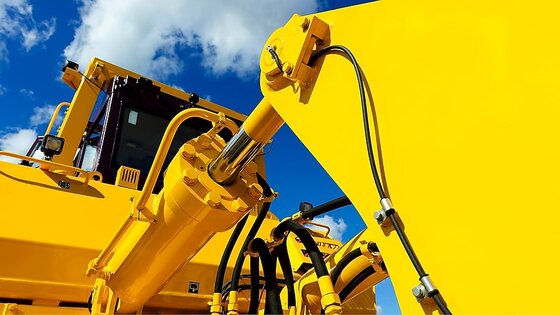What Are The Parts Of The Hydraulic System?
Posted on October 6th, 2022
You can use hydraulic systems to transfer energy between machine parts. You can find hydraulic systems in your home in addition to factories and construction sites.
An Explanation of Hydraulic Systems
Today, people use hydraulic systems in many processes, from tiny assembly operations to integrated steel. Using Pascal’s law, hydraulics allows the operator to perform essential tasks with a minimal investment in mechanical linkage.
The hydraulic fluid that transmits energy from one point to another in a hydraulic system makes Pascal’s law’s basic tenets practical. You can transfer power instantly with hydraulic fluid because it is almost incompressible.
Hydraulic System Examples
If you didn’t know it already, ancient irrigation systems in Egypt and Mesopotamia used hydraulic systems. However, Joseph Bramah’s hydraulic company created the first hydraulic system in 1795. During the Industrial Revolution, the hydraulic press played a significant role.
These days, hydraulic systems are everywhere. Discover how hydraulic systems function in your daily life and even inside your body by continuing to read!
- Systems For Aeroplanes
You can find the influence of hydraulic systems in an aeroplane apart from the landing gear, wing retraction, brakes, and steering systems. The earlier aircrafts used hydraulic brake systems as well. When you’re 40,000 feet above the ground, it’s even more crucial that these systems are dependable and unlikely to malfunction.
- Construction Tools
Every time you see a sizable construction vehicle, you witness a hydraulic system. Excavators, cranes, and bulldozers can all move heavy loads around a construction site thanks to hydraulic systems. However, a construction crew must work much more complicated and much longer to finish a project without hydraulic systems.
- Hydraulic Brakes
Your car stops when you press the brake pedal. However, your luxurious car didn’t simply come to a stop with the slightest pressure on the brake pedal. Simply put, the hydraulic brake system also went into play. It transmits the force from your foot through the brake system’s cylinders, pistons, brake fluid, brake pads, and rotors.
- Hydraulic Press
The hydraulic press emerged as a concept back in the 18th century and is now a standard component of many contemporary mechanical systems. In manufacturing, people primarily use it as a compressive force to flatten or bend a sturdy piece of metal. Compared to mechanical presses, hydraulic presses are frequently less expensive and take up less space.
- Hydraulic Power Steering
The earlier automobiles typically introduced power steering systems with hydraulic power to people. The pressure generated by each wheel turn would then transmit throughout the steering system, causing the car to turn in the desired direction.
While electric power steering systems are more fuel-efficient than hydraulic steering systems, hydraulic steering systems are still available on the automotive market.
How Do Hydraulic Systems Use Fluids?
Some people believe hydraulic systems require water; that might have been true in the past. However, the fact that some fluids not only transmit energy but also lubricate the system and perform self-cleansing makes them much more effective than others.
Here are a few examples of the various kinds of hydraulic fluids in use today:
- Water Based Fluids
They are highly fire-resistant. They do, however, need close monitoring because they don’t offer as much lubrication as some other liquid types. High temperatures can cause them to evaporate as well.
- Petroleum-Based Fluids
They are currently the most common. In fact, by adding different additives, you can tailor them to the system. For instance, you can change them to include oxidation and rust inhibitors, extreme pressure, anti-wear, and anti-corrosion. As well they come with reasonable pricing.
- Synthetic Fluids
Last but not least, there are artificial lubricants that are also very helpful in systems with high temperatures and high pressures. In addition to lubricating the system, they may also be fire-resistant. Synthetic fluids, however, are artificial and could include poisonous ingredients. They frequently cost more than other kinds of hydraulic liquids as well.
Conclusion
Since hydraulic fittings is relatively inexpensive but has a lot of power, people use it frequently for lifting or moving heavy loads, even though hydraulics’ fundamental principle is very straightforward and extremely old.
Engineers have been unable to completely replace a hydraulic system in favour of something new due to how well it functions. However, you can gather more information by setting up an appointment with HydroFitMe.

